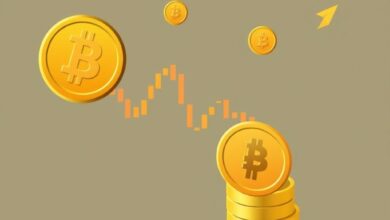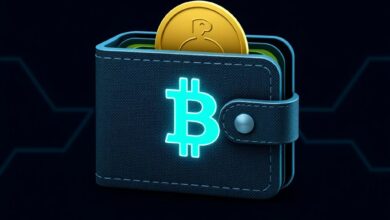What are stablecoins – USDT, USDC, BUSD

For anyone engaged in crypto trading or investment, familiarity with dollar-pegged assets is non-negotiable. These instruments provide a reliable hedge against market fluctuations and offer liquidity in volatile environments. By maintaining a 1:1 ratio with the U.S. dollar, these coins facilitate seamless transactions and strategic positioning.
USDT, USDC, and BUSD are pivotal players in this space, each boasting unique features that appeal to different segments of traders. While they all aim for price stability through backing by fiat reserves, their operational frameworks vary significantly.
Understanding the reserve management practices and regulatory compliance of each asset allows investors to make informed decisions about risk exposure. For instance, examining the transparency reports provided by issuers can reveal how effectively these currencies maintain their peg amidst market dynamics.
Incorporating these stablecoins into your portfolio can mitigate risks associated with crypto volatility while still enabling participation in broader financial ecosystems. Their integration into various exchanges further enhances accessibility, making them indispensable tools for modern traders navigating the complexities of digital finance.
How to Use USDT?
To effectively utilize this cryptocurrency pegged to the dollar, follow these steps:
- Choose a Reliable Exchange: Select a platform that supports trading with this stablecoin. Popular options include Binance, Kraken, and Bitfinex.
- Create an Account: Register on the chosen exchange. Complete identity verification as required by the platform for compliance purposes.
- Deposit Funds: Transfer fiat currency or other cryptocurrencies to your account. Make sure to check deposit fees associated with your chosen method.
- Buy USDT: Navigate to the trading section of the exchange. Select the trading pair that includes your deposited funds and purchase the stablecoin at the current market rate.
- Store Securely: Transfer your holdings from the exchange to a secure wallet. Options include hardware wallets for enhanced security or software wallets if convenience is preferred.
Utilization extends beyond mere holding; consider these applications:
- Trading Pairing: Use it as a base currency when trading other cryptocurrencies, allowing for easier conversions without volatility affecting your position.
- Lending Platforms: Engage in decentralized finance (DeFi) by lending your holdings for interest on platforms like Aave or Compound.
- E-commerce Transactions: Some merchants accept this token for payments, providing an efficient way to conduct transactions using crypto.
This approach allows you to manage risk while leveraging opportunities within finance. Always stay updated on market trends and regulatory changes affecting this asset class.
Benefits of USDC
Utilizing this dollar-pegged crypto offers significant advantages for both individuals and businesses. Its strong regulatory compliance ensures a higher level of trust, attracting users who prioritize security in their financial transactions.
One major benefit is the transparency provided through regular audits. This feature enhances credibility, allowing users to verify that each token is backed by a corresponding dollar held in reserves. Such assurance is critical for those looking to maintain stability in volatile markets.
The ability to easily convert USDC into traditional currency or other cryptocurrencies makes it an attractive option for traders seeking flexibility. This liquidity facilitates smooth entry and exit points during trading sessions, optimizing investment strategies.
Furthermore, the integration of USDC within various decentralized finance (DeFi) platforms expands its utility beyond simple transactions. Users can engage in lending, borrowing, or earning interest on their holdings, thereby amplifying their financial opportunities.
In addition, the widespread adoption by major exchanges and wallets enhances accessibility, making it easier for anyone to participate in the crypto economy without facing barriers. This inclusivity aligns with the growing demand for user-friendly financial solutions.
Choosing this stablecoin also allows for more straightforward cross-border transactions. Reduced fees and quicker settlement times compared to traditional banking systems streamline international trade and remittances.
Finally, aligning with innovative blockchain technologies positions this digital asset as a forward-thinking choice for those invested in the future of finance. The continuous development surrounding its ecosystem promises ongoing improvements and features that can elevate user experience.
BUSD for Trading
Utilize BUSD to mitigate volatility in your trading strategy. This dollar-pegged asset offers a reliable means of maintaining value during market fluctuations. Traders can quickly convert their crypto holdings into this stablecoin, allowing for seamless transitions between various digital assets without the stress of price swings.
When engaging in exchanges, consider using BUSD as a base currency. Many platforms support it, enabling you to trade against a wide range of cryptocurrencies while minimizing exposure to potential losses associated with more volatile tokens. Always check liquidity levels; higher liquidity ensures better execution prices and reduced slippage.
Incorporate BUSD into your portfolio as a hedge. By holding this stablecoin, you can preserve capital during downturns while remaining ready to capitalize on emerging opportunities. Its backing by fiat reserves adds another layer of security, reinforcing trust among traders.
Keep an eye on transaction fees when moving funds involving this asset. Although generally lower than those associated with traditional banking systems, costs can vary depending on the exchange and network conditions. Plan your trades accordingly to maximize efficiency and profitability.
Lastly, track regulatory updates regarding the use of BUSD in different jurisdictions. Awareness of compliance issues can safeguard your investments and trading activities from unforeseen complications.
Risks Involving Stablecoins
Investors must remain vigilant regarding potential volatility that can affect the peg to the dollar. While these cryptocurrencies aim for stability, their backing mechanisms might not be foolproof. For instance, if a platform fails to maintain adequate reserves, the value could deviate significantly from expectations.
The reliance on third-party audits poses another risk. Regular assessments are essential to ensure that assets backing these tokens truly exist and are liquid enough to handle withdrawals. A lack of transparency can lead to distrust among users and potential market panic.
Regulatory scrutiny is increasing worldwide, which could impact how these coins operate. Sudden regulatory changes might force issuers to alter their policies or even cease operations, exposing investors to unforeseen risks.
Market dynamics also play a crucial role. Large trades or market manipulation could create temporary dislocations in price, leading to significant losses for those not prepared for such events. Staying informed about overall market sentiment is vital for mitigating these risks.
Lastly, technological vulnerabilities cannot be overlooked. Smart contracts and protocols can harbor bugs or exploits, which may result in loss of funds or compromised security. Regular updates and audits of codebases are necessary to minimize this exposure.







